⚠️ Have you received an email with the subject “Security status not satisfied” that starts with “I was planning to say hello, but now I think greetings are unnecessary”?
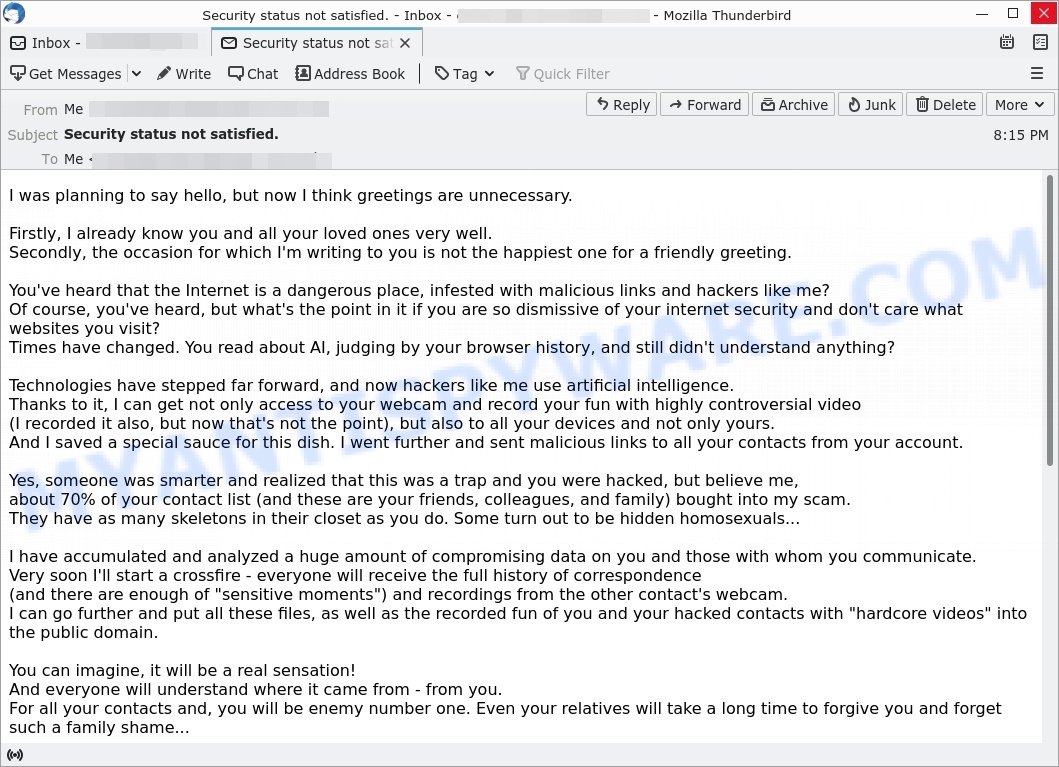
Here’s what actually happens: The email claims to know you and your contacts, and threatens to release compromising videos and messages unless you pay $1390 in Bitcoin. You’re urged to transfer the money quickly or face public humiliation.
But here’s the catch: there is no actual evidence or compromising material. The scammer uses fear tactics to trick you into paying money. You won’t solve the problem by paying; instead, your information might be at risk of further scams.
💡 The “Security status not satisfied” email is a scam. It might sound convincing, but it’s a common tactic known as sextortion. Real security warnings come from your service providers through official channels, not threatening emails. Be very careful with your personal and financial details, and report such emails to the authorities. Let others know about these scams to help protect everyone online.
Table of Contents
🚨 Is the “Security status not satisfied” Email a Scam?
Yes, this email, which starts with “I was planning to say hello, but now I think greetings are unnecessary”, is a classic example of an extortion scam. 🚫 If you’ve received an email with this subject line or a similar message attempting to blackmail you by claiming to have compromising information, be very cautious. These threats are not based on real incidents but are designed to exploit your fear and coerce you into paying a ransom.
False Claims Examples:
- I have access to your webcam and have recorded controversial videos of you.
- I have sent malicious links to all your contacts, and many have compromised their devices.
- You must transfer $1390 USD to my Bitcoin wallet within 48 hours to prevent the exposure of this information.
- Do not contact the police or try any tricks; my demands won’t change, and it will just waste time.
- This message was generated automatically in your mailbox, so do not reply.
The email uses threats and fear to create a sense of urgency. 🚨 The goal? To coerce you into sending money to the scammer without any real proof of the claimed videos. These scammers capitalize on the panic and shame of their victims to extort money.
The email read as follows:
I was planning to say hello, but now I think greetings are unnecessary.
Firstly, I already know you and all your loved ones very well.
Secondly, the occasion for which I’m writing to you is not the happiest one for a friendly greeting.You’ve heard that the Internet is a dangerous place, infested with malicious links and hackers like me?
Of course, you’ve heard, but what’s the point in it if you are so dismissive of your internet security and don’t care what websites you visit?
Times have changed. You read about AI, judging by your browser history, and still didn’t understand anything?Technologies have stepped far forward, and now hackers like me use artificial intelligence.
Thanks to it, I can get not only access to your webcam and record your fun with highly controversial video
(I recorded it also, but now that’s not the point), but also to all your devices and not only yours.
And I saved a special sauce for this dish. I went further and sent malicious links to all your contacts from your account.Yes, someone was smarter and realized that this was a trap and you were hacked, but believe me,
about 70% of your contact list (and these are your friends, colleagues, and family) bought into my scam.
They have as many skeletons in their closet as you do. Some turn out to be hidden homosexuals…I have accumulated and analyzed a huge amount of compromising data on you and those with whom you communicate.
Very soon I’ll start a crossfire – everyone will receive the full history of correspondence
(and there are enough of “sensitive moments”) and recordings from the other contact’s webcam.
I can go further and put all these files, as well as the recorded fun of you and your hacked contacts with “hardcore videos” into the public domain.You can imagine, it will be a real sensation!
And everyone will understand where it came from – from you.
For all your contacts and, you will be enemy number one. Even your relatives will take a long time to forgive you and forget such a family shame…It will be the real end of the world. The only difference is that there will be not four horsemen of the apocalypse, but only one – (=
But there is no such thing as a completely black stripe without any white dots.
Luckily for you, in my case the “Three M Rule” comes into play – Money, Money and Money again.I’m not interested in your worthless life, I’m interested in people from whom I can profit.
And today you are one of them.That’s why: Transfer $1390 in Bitcoin to: 1PPJpvSPbbMwbESJZXGS8VtKiFQkmm7DvK …within 48 hours!
You don’t know how to use cryptocurrencies? Use Google, everything is simple.
Once payment is received, I will delete all information associated with you and you will never hear from me again.
Remember one thing: my crypto address is anonymous, and I generated this letter in your mailbox and sent it to you.
You can call the cops, do whatever you want – they won’t find me, my demands won’t change, but you’ll just waste precious time.The clock is ticking. Tick tock, a minute out of 48 hours has passed right now. An hour will soon pass, and in two days your old life will pass forever.
Either goodbye forever (if I get my payment), or hello to a brave new world in which there will be no place for you.Hasta La Vista, Baby!
P.S. Almost forgot. Finally learn what incognito tabs, two-factor authentication, and the TOR browser are, for God’s sake!
How the scam works
When you receive an unexpected email with the subject “Security status not satisfied“, it can be quite shocking 🚨. This reaction is especially strong if the letter begins or contains intimidating or menacing language designed to catch you off guard. You might think, “How do they know so much about me?” In reality, these scammers likely don’t have your personal information; their main strategy is to instill fear and urgency.
The email will probably include unfounded threats, alleging they have recorded you in compromising videos 🎥. The message is deliberately unclear and threatening, crafted to make you panic: “Could this actually be happening?”
Then, the scammer might claim they’ve used advanced artificial intelligence to hack into your devices, claiming to have complete access to your and your contacts’ digital lives 💻. A clear indicator that this is a scam is the lack of any real evidence 🚩. This tactic relies on the fear of advanced technology to intimidate, not genuine hacking ability.
The email culminates in a request for money 💰. The scammer demands payment in Bitcoin, exploiting its anonymity and the difficulty of tracing such transactions. They create a high-pressure situation, hoping you’ll pay promptly. However, paying does not ensure your safety and might lead to further targeting.
As you process the email, thoughts like, “Am I really at risk?” or “Can this person really do what they claim?” may occur 🕵️♂️. Usually, these threats are baseless, more about exploiting your fears than posing a real cybersecurity threat.
What should you do? It’s best not to respond to the scammer or send any money. Instead, prioritize your online security: update your passwords, assess your devices for actual risks, and think about reporting the scam to the authorities if it involves personal threats or extortion demands 🔐. This situation serves as a reminder to always be vigilant and take active steps to protect your online presence.
In summary, this scam uses tricks to make you scared and rushed. If you receive an email like this, do not engage with the scammer and do not send any money. Instead, delete the email. It is also important to ensure that your computer has up-to-date anti-virus software and that you use strong, unique passwords for all of your accounts to reduce the likelihood of falling victim to scams like this.
Examples of such scams
Scammers have developed a variety of tactics to intimidate and exploit unsuspecting individuals. Here are a few common examples:
🔒 Your Private Information has been Stolen Email Scam
Here, the scammer will claim they’ve stolen sensitive information from you and threaten to release it unless you pay a ransom. They rely on the scare factor, hoping you’ll pay to protect your reputation, even though they likely have no data at all.
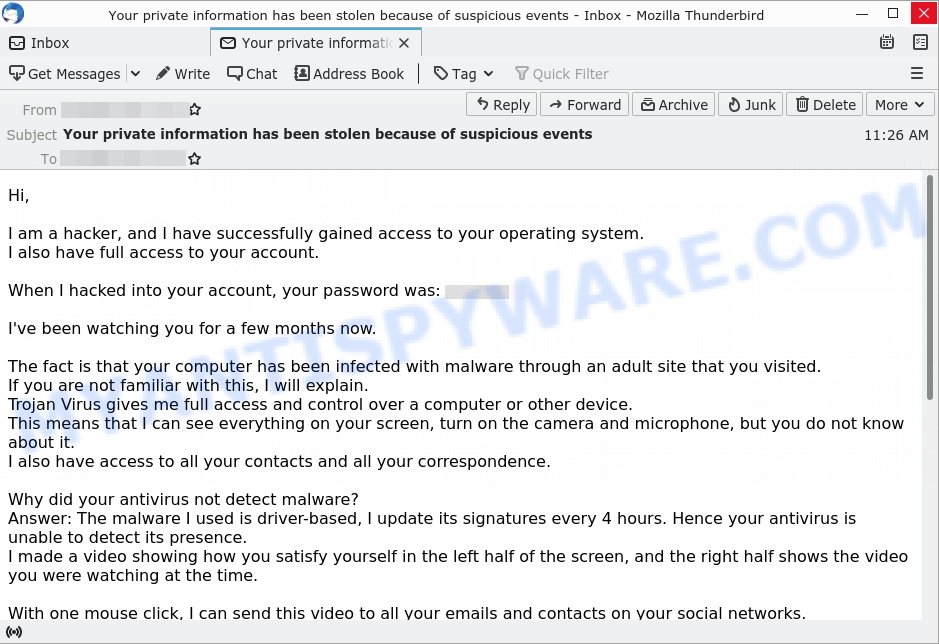
📹 I RECORDED YOU Email Scam
In this scam, the sender claims to have control over your camera and alleges they have recorded you during private moments. They typically demand payment to keep the footage private. Beware: this is a bluff to get you to pay up out of fear.
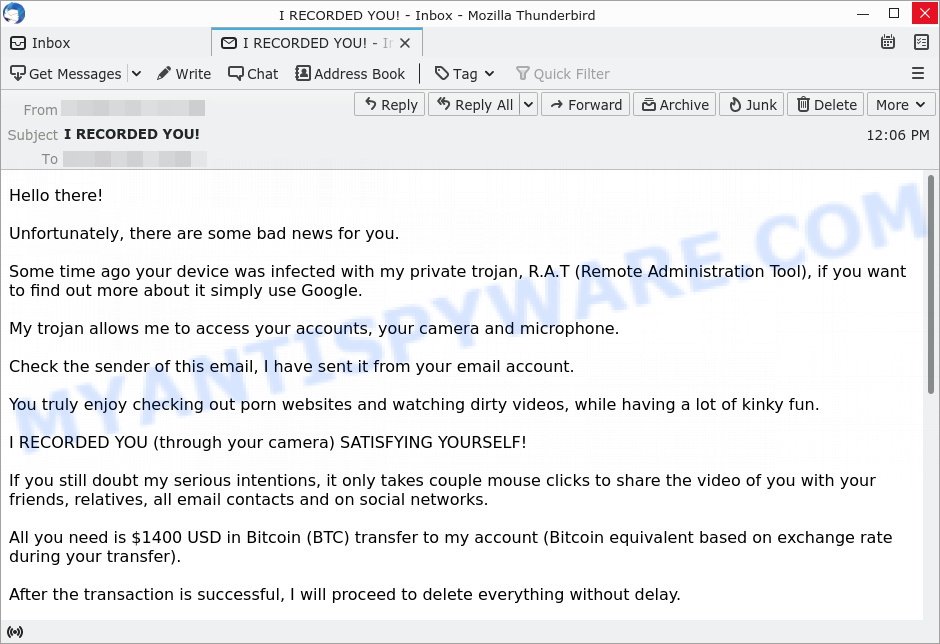
💼 I am a professional hacker EMAIL SCAM
Posing as a hacker, the sender of this email might say they’ve infiltrated your system. They may even claim they have proof of embarrassing activity and will publish it unless you send them money. Remember, a real hacker wouldn’t announce their presence—it’s a tactic to pressure you into paying.
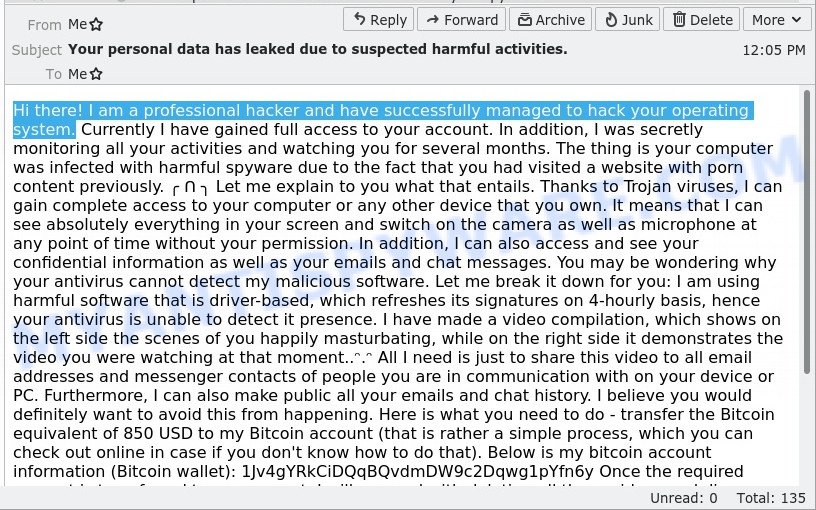
Each of these scams plays on fear and urgency to trick you into acting against your best interest. Always approach such emails with skepticism, verify your security, and do not engage with the scammers.
Should you pay?
No, you should not pay the ransom demanded by the scammer. Remember that this is a scam and paying the ransom will only encourage the scammer to continue their criminal activities! Additionally, paying the ransom can make you a target for future scams. It is important to stay vigilant and protect your personal information from such scams by using strong and unique passwords, enabling two-factor authentication, and regularly updating your computer’s security software. If you receive such an email, it is best to report it to the authorities and your email provider.
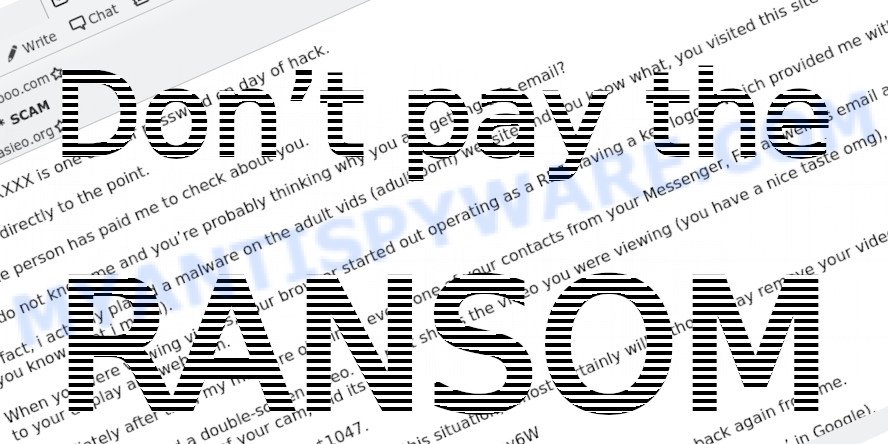
What to Do if You Receive the Email
Receiving the “Security status not satisfied” email can be deeply unsettling, but with the right steps, you can ensure safety and peace of mind.

Here’s a specific guide on handling this scam:
Begin by reminding yourself to stay calm. The email is crafted to elicit panic, pushing recipients into rash decisions. Recognize its true nature—a manipulative attempt to exploit fear.
Resist any impulses to pay. Even if you’re tempted to make the problem go away, understand that payment doesn’t guarantee safety. It merely emboldens the scammer, possibly marking you as an easy target for future deceptions.
Do not engage with the scammer. Replying or trying to open a dialogue can inadvertently give away more information, or signal that your email is active, making you a prime candidate for further scams.
Seeing a familiar password can be particularly jarring. If the scam email mentions a password you recognize, it’s essential to check its source. Use services like haveibeenpwned.com to see if your email or credentials have been compromised in any past data breaches.
Subsequent to that, update your passwords. Always choose strong, unique combinations and activate two-factor authentication on platforms that support it.
As a precaution, run a comprehensive security scan on your device. While the scam email’s claims about malware are usually baseless, this step ensures your system remains clean and threat-free.
Report the email to relevant authorities (e.g., FTC). Sharing details with your local law enforcement or cybercrime units can contribute to ongoing investigations and aid in the crackdown on such malicious activities.
Lastly, spread awareness. Inform friends, colleagues, and family about the scam, equipping them with the knowledge to recognize and sidestep such threats. Knowledge, shared and acted upon, diminishes the effectiveness of these scams, making the digital world a bit safer for everyone.
Threat Summary
| Name | ‘Security status not satisfied’ Email Scam, ‘I was planning to say hello’ Email, Scam |
| Type | Phishing/Sextortion |
| Email Subject | Security status not satisfied. |
| Ransom amount | $1390 USD (in Bitcoin equivalent) |
| Bitcoin Address | 16ao3XGt97R9we1Rr5BRAw6xn3sTkJcKdh, 18bGv3kKTbj6AYfuoFivNFv99WdaxqXd6U, 1A2uApEqhixtRBbtWiRjFgTzbNa5A9xyRD, 1PPJpvSPbbMwbESJZXGS8VtKiFQkmm7DvK |
| Fake Claims | Compromised data, webcam access, malware/backdoor installed |
| Damage | Psychological distress, potential financial loss if ransom is paid |
| Distribution | Mass emailing, likely from a purchased or hacked email list |
| Tactics | Fear induction, urgency, deception |
| Variations | Different ransom amounts, varying email content, alternative cryptocurrencies for payment |
| Prevention Tips | Use strong, unique passwords; enable two-factor authentication; be skeptical of unsolicited emails; never pay ransoms |
| Reporting Info | Forward to the Anti-Phishing Working Group at reportphishing@apwg.org; Report the scam to relevant authorities (e.g., FTC); Share information about the scam with friends and family to raise awareness; Monitor online accounts for any suspicious activity |
Conclusion
The “Security status not satisfied” email is a classic example of a sextortion scam, designed to exploit fears and extort money. These emails use frightening claims and demand payment, often in Bitcoin, under the guise of protecting your reputation. Remember, these threats are baseless, crafted to trigger a panicked response.
Bottom Line: Do not engage with these emails. The best defense is to ignore their demands and prioritize your online security. 🛡️💻
Stay vigilant and think critically; an email that instantly scares you or seems overly sophisticated is probably a scam. 🤔















